Week 6: Noticing the Ignored
- bethgaleckyj
- Mar 5, 2023
- 9 min read
Updated: Jun 15, 2023
How do you look, research and record to find a unique insight?
This weeks workshop challenge revolves around looking, observing, researching and recording what is around us, and furthermore, how we can utilise what we see as a source of inspiration for our design work.
Our task is to choose a street, to visit it as often as we can, make observations and then create a piece that we feel signifies that area.
Initial Research
I am a firm believer that it is the community that makes a place what it is. Every building, street, stop sign, piece of litter etc was created and placed there by a person at some point in time. Furthermore, my approach to this weeks topic, was to not only look into the area itself, but also into how the community of a city can be researched, documented and, overall, seen.
Charles Booth's London-
Charles Booth was a philanthropist, industrialist and social reformer known mainly for his work in creating 'the poverty map'. At first, this map was created with the idea of refuting socialist allegations that a quarter of London's population was living in poverty. However, Booth's research had actually revealed that the figure was even higher than expected.
Fig. 1- Charles Booth Map https://booth.lse.ac.uk/map/13/-0.1235/51.5112/100/0
Fig. 2-Charles Booth Map Codes https://booth.lse.ac.uk/map/13/-0.1235/51.5112/100/0
Booth created this map by extensively surveying the people that lived with the different areas, streets and neighbourhoods of London. As a result, he created a colour code to signify the different levels of poverty; for example, dark blue represents 'Very poor. Casual, chronic want', while black stands for 'Lowest class. Vicious, semi criminal.'
His documentation of the people within London is fascinating- his research was so extensive and the results of his findings were incredibly enlightening- especially now as we are able to see his map layered on top of our modern maps on the Charles Booth website: https://booth.lse.ac.uk/map/14/-0.1174/51.5064/40/0
Pat Wingshan Wong-
The illustrator, researcher, and educator Pat Wingshan Wong, is known for her work on the Barter Archive project, which is a community-led project and has been going on since 2019. This project has allowed her to 'investigate into how the new and the old interact in the 300-year-old Billingsgate Fish Market'.

Fig. 4- Barter Archive, Pat Wingshan Wong, 2021 https://www.itsnicethat.com/articles/pat-wingshan-wong-illustration-280921

Fig. 5- Barter Archive, Pat Wingshan Wong https://www.itsnicethat.com/articles/pat-wingshan-wong-illustration-280921

Fig. 6- Barter Archive, Pat Wingshan Wong https://www.itsnicethat.com/articles/pat-wingshan-wong-illustration-280921
Overall, I absolutely love how Pat Wingshan Wong documented the community within Billingsgate Fish Market. The amount of detail that was put into each of her drawings showcases the humbleness of the market, and allows a lot of incredible insight into the different kinds of people that visit.
This is definitely a practice that I would like to try for this weeks workshop challenge.
Workshop Challenge
I decided that I would choose The Promenade in Cheltenham as my street of choice.
Overall, it is my favourite part about Cheltenham for many different reasons- not only is it a rather big and spacious area, but there's always something interesting happening there- whether that be brilliant markets or talented buskers/ creatives.
It also always seems to be busy, which is partly why I thought it would be a brilliant place to start my observations and get inspired.

I started my observations during my commute to work. Although I couldn't stay in the area for long, I decided to record my walk through promenade in the hopes that I could look back on the footage and find something that I hadn't noticed before.

However, I felt that this way of recording/ gathering information came with a few flaws. The first being that I was so preoccupied in taking the video, that it had ultimately stopped me from truly seeing what was around me. And also, due to the fact that I was actively walking and rushing to get to work, it meant that the footage I took was far too quick and shaky- which made it very unclear and difficult to see anything of value.
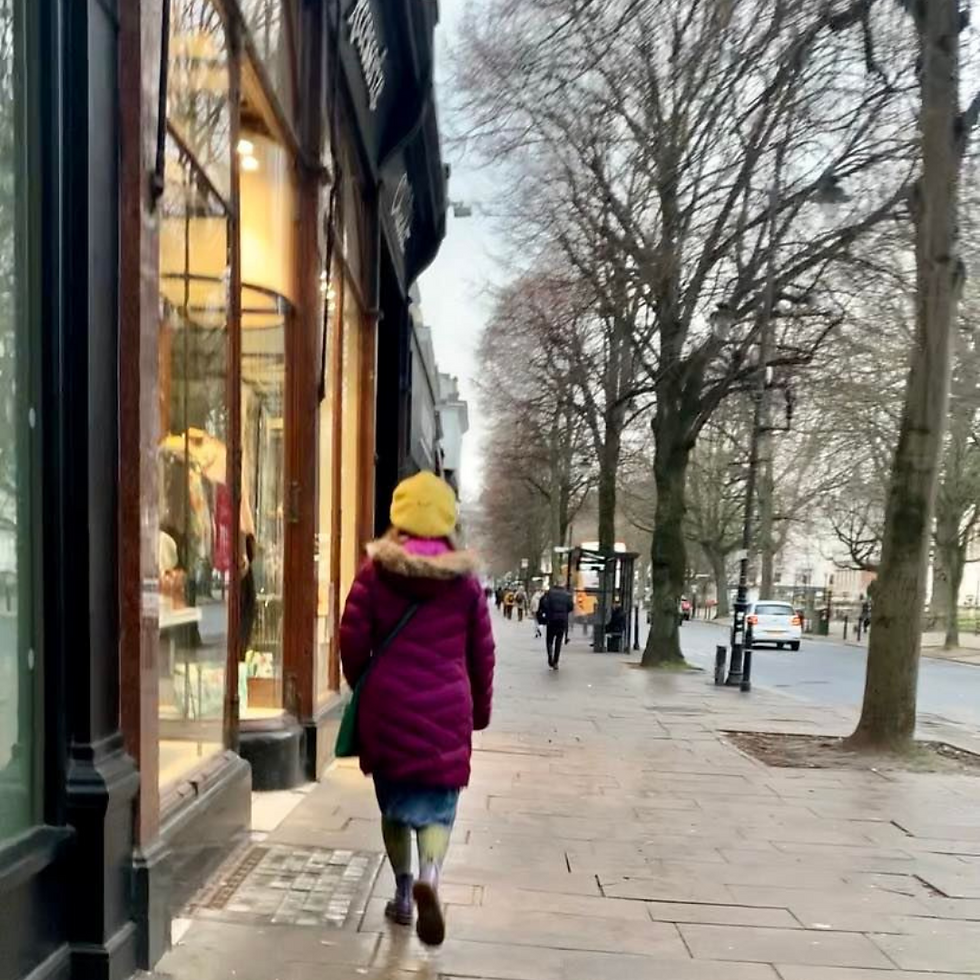
Although I continued to do this a few times, and tried different methods of holding my phone/camera, I decided that I would also come back to the area on my day off and take time to really wonder around and observe my surroundings.
At first I was just going to come back to capture more footage and take pictures, but I wanted to try another method on top of that- which was to bring my sketchbook and sketch what I saw.
Lynne Chapman
The wonderful artist and illustrator, Lynne Chapman utilises her surroundings and the people around her to inspire and influence her work. She wrote a book called 'An Urban Sketcher's Manual to Drawing Figures and Faces' and has a blog that advises you on how to draw people and sketch in public places.
Fig. 7- Sketching on the Bus, Lynne Chapman https://lynnechapman.blogspot.com/2010/06/sketching-people.html
Fig. 8- Leopard Skin Shoes, Lynne Chapman https://lynnechapman.blogspot.com/2010/06/sketching-people.html
Fig. 9- Busker, Lynne Chapman https://lynnechapman.blogspot.com/2010/06/sketching-people.html
Fig. 10-Live Musicians, Lynne Chapman https://lynnechapman.blogspot.com/2010/06/sketching-people.html
I think her techniques and her way of gathering information is incredibly effective as it allows her to draw inspiration from everyday life, but it also allows her to see the world through your own style. It can also allow you expand upon your drawing abilities and develop upon your understanding of structure, anatomy and perspective.
And so, armed with my phone, my sketchbook and my fine liners, I ventured to The Promenade in search for some inspiration, and here is what I had found.
Discovery
Pigeons
These pigeon statues have been around Cheltenham for a while, and they are often things that I have noticed or glanced at before, but I never went out of my way to figure out why they were there. And so I decided to explore around the promenade area and see how many I could find.
Although I couldn't find a plaque or a sign that could explain to me what they were or why they were there, later that evening I decided that I would do some research to see if I could at least find out who had created them.
On the official Cheltenham Borough Council website, I found an article that explained how the pigeons were an art project that came about back in 2014. Each pigeon was made by a different practitioner, creative and/or artist and was created with the purpose of celebrating Cheltenham's heritage.
'It is said that Cheltenham’s spa water was discovered in 1716 when pigeons were found gathering and pecking around a spring near present day Bayshill Road. Ever since, the pigeon has been a symbol of Cheltenham’s spa water heritage, featuring as a motif on the Cheltenham Coat of Arms and as cast-iron finials atop the town’s fingerpost signs.'
There were 8 pigeon statues made and distributed throughout the centre of Cheltenham and each one is unique.

Fig. 11- Cheltenham Pigeon Art Project Map https://www.cheltenham.gov.uk/info/48/townscape_and_urban_design/1489/cheltenham_pigeon_art_project
These are the 4 that can be found in The Promenade.
Fig. 12- Mrs Wood, Susan Early https://www.cheltenham.gov.uk/info/48/townscape_and_urban_design/1489/cheltenham_pigeon_art_project/6
Fig. 13- PC/ Astley Lloyd Blair, Rachael Thorogood https://www.cheltenham.gov.uk/info/48/townscape_and_urban_design/1489/cheltenham_pigeon_art_project/5
Fig. 14- At Home Everywhere, Joy Parker https://www.cheltenham.gov.uk/info/48/townscape_and_urban_design/1489/cheltenham_pigeon_art_project/3
Fig. 15- Pombo, Laura Filho https://www.cheltenham.gov.uk/info/48/townscape_and_urban_design/1489/cheltenham_pigeon_art_project/4
Mrs Wood- created by Susan Early
Susan Early is a member of the Gloucestershire Guild of Craftsmen and has been a weaver for over 20 years- hence why the pigeon she created was made with a nest made out of willow and hedgerow material.
Her studies in Creative Basketry allows her unique insight into the many ways in which willow (and other natural materials) can be manipulated to create beautiful sculptural forms.
PC Pigeon/ Astley Lloyd Blair- created by Rachael Thorogood
Rachel Thorogood has utilises recycled wire and waste material to create her sculptures- this pigeon was actually wrapped in reclaimed copper- (also hence the name 'The Copper') which, over time, will age with the elements around it. Further research suggests that the pigeon was named after the first black police officer in the country, Astley Lloyd Blair.
At Home Everywhere- created by Joy Parker
Joy Parker is an artist that specialises in mosaic sculptures. The use of different shades of gold, from white gold, to antique gold, to gold smalti (typically reserved for religious art), are used to elevate 'the humble pigeon to that of a goddess, celebrating the story of how pigeons brought wealth to the people and town of Cheltenham'.
Joy has also placed the pigeon on top of the world, reminding us to not only reform our judgements of the pigeon, but to remember that we should feel at home wherever we land.
Pombo- created by Laura Filho
Laura Filho is a Cheltenham-based designer-maker who has been creating jewellery professionally for over 15 years. She created Pombo utilising metal feathers, diamanté and bold colours, which has given it a Brazilian carnival look (Pombo is Brazilian for pigeon).
This flamboyant pigeon is not only playful and a direct contrast to the dreariness of the town, it also represents Laurie's belief in 'cross-country unity and a united world'.
People
I decided to sit down on one of the benches in The Promenade and draw whatever it was that I noticed.
However, as someone who has always loved to people-watch, I found that I was more drawn to the people that mulled around the area.
And so I started sketching them.
Overall, it was a lot of fun to document the different types of people that lingered around The Promenade. This method of documenting and observing was challenging, as almost everyone was on the move or disappearing within moments of their arrival- yet it was interesting to see the kinds of people I noticed.
Like anyone would be, my eyes were drawn to those wearing bright colours- such as high vis vests, bright hoodies or flamboyant coats. However, I was also interested in those who were stood off to the side smoking, those who were sat alone on the bench, a busking man wearing a smart cowboy hat, and people who were engrossed with their phones- even as they walked through town (how do they not walk into things?!)
However, the more I watched, the more I truly realised the power that our clothes have.
How they can help us to blend in with our surroundings, how they can help us stand out, and how they can act as windows into another persons age, profession, and personality.
Development
With the information I gathered over the course of the week, I wanted to create something that combined everything that I had learnt into one piece. Meaning that not only did I want to highlight the importance and signification of the pigeons, but I also wanted to elaborate on the actual community of Cheltenham (and the kinds of clothes that these demographics wear).

Not going to lie, my automatic idea was to create a series of pigeons wearing the peoples clothes.
And after some initial sketches, I felt like I wanted to recreate these images digitally so that I could elaborate on the colours and textures of the pigeons and the kind of clothes they're wearing- such as the high vis jacket and the fur coat.
However, being mindful of how much time I had, I decided to copy and paste one pose, but draw each one with different outfits.
In the end, I really like how each pigeon came out and I feel like each of the outfits had really helped to represent a part of Cheltenham's community. In some ways, the repetition of the pigeon and the different variations of colours and imagery actually makes me think of Andy Warhols pop art pieces.
Initially, I was going to choose one pigeon that I could make into a poster for The Promenade, but because I loved them all so much, I decided to use all of them instead and combine them onto one single page.

Final Piece

I decided that to finish off my poster for The Promenade, I decided to create a simple title that summarised the whole piece together. I decided to use the font 'Old Standard' in bold as I felt that the shape, lines and curves reminded me of the architecture and style of the buildings of Cheltenham's promenade. Using the line on either side emphasises this as it then create its into a sort of skyline effect.
Reflection
My final outcome for this weeks challenge was definitely very interesting. I really like the piece that I had created as I felt that it summarised my findings quite well- from the pigeon statues (and the history behind Cheltenham's prosperity) and the community that resides around the area.
Pigeons are creatures that are quite often ignored, disregarded or viewed at as nothing but vermin- and so to discover that these creatures were actually the reason for this towns prosperity was incredibly enlightening and made me view this city a little differently- as a place that not valued its community, but the creatures that resided here as well.
I believe that in general, we also tend to overlook each-other quite a lot. We tend to focus our sights on everything other than the people around us- whether that be looking at our phones, or looking into shop windows. And so to sit down, and to just truly watch and observe the people around you, not only does this help you gain some perspective into the kind of the environment you live in, but it can also allow you the opportunity to get inspired.
References
Chapman, L. (2010) How to Draw People: Sketching in Public Places. Blogspot. [Online] Available at: https://lynnechapman.blogspot.com/2010/06/sketching-people.html (Accessed: March 1, 2023).
Cheltenham Pigeon Art Project (2019) Cheltenham pigeon art project | Cheltenham Borough Council. Cheltenham Borough Council. [Online] Available at: https://www.cheltenham.gov.uk/info/48/townscape_and_urban_design/1489/cheltenham_pigeon_art_project (Accessed: March 1, 2023).
Edwards, S. (2023) Week 6: Lecture – Looking, seeing and capturing. Falmouth Flexible. [Online] Available at: https://flex.falmouth.ac.uk/courses/1165/pages/week-9-lecture?module_item_id=63439 (Accessed: February 26, 2023)
Maher, D.M. (2021) Illustrator Pat Wingshan Wong on creating a collaborative archive with the fishmongers of Billingsgate Market, It's Nice That. [Online] Available at: https://www.itsnicethat.com/articles/pat-wingshan-wong-illustration-280921 (Accessed: February 27, 2023).
Map: Charles Booth's London (no date) Map | Charles Booth's London. [Online] Available at: https://booth.lse.ac.uk/map/14/-0.1174/51.5064/100/0 (Accessed: February 27, 2023).








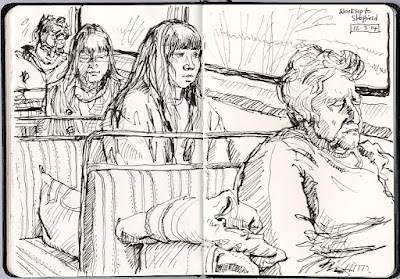

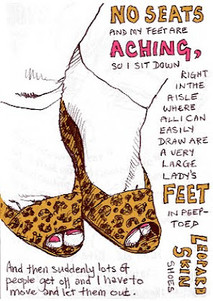
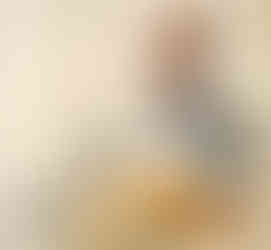


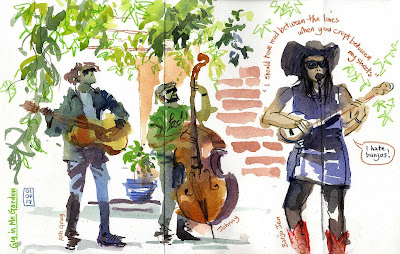





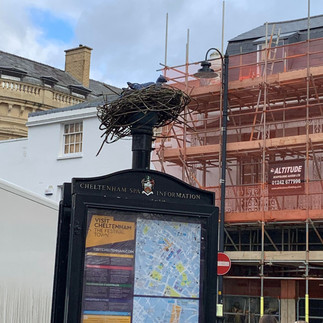





















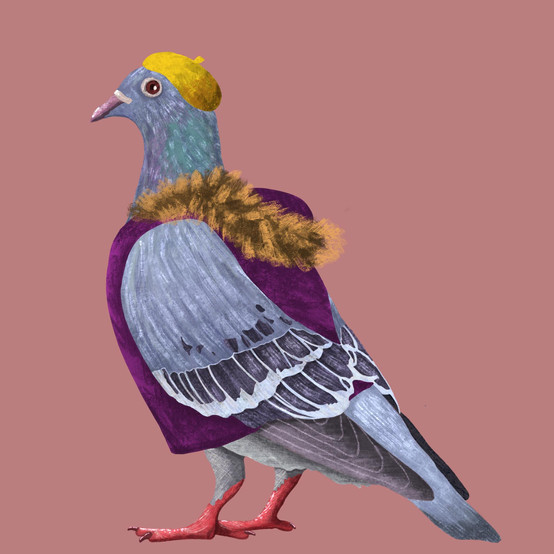
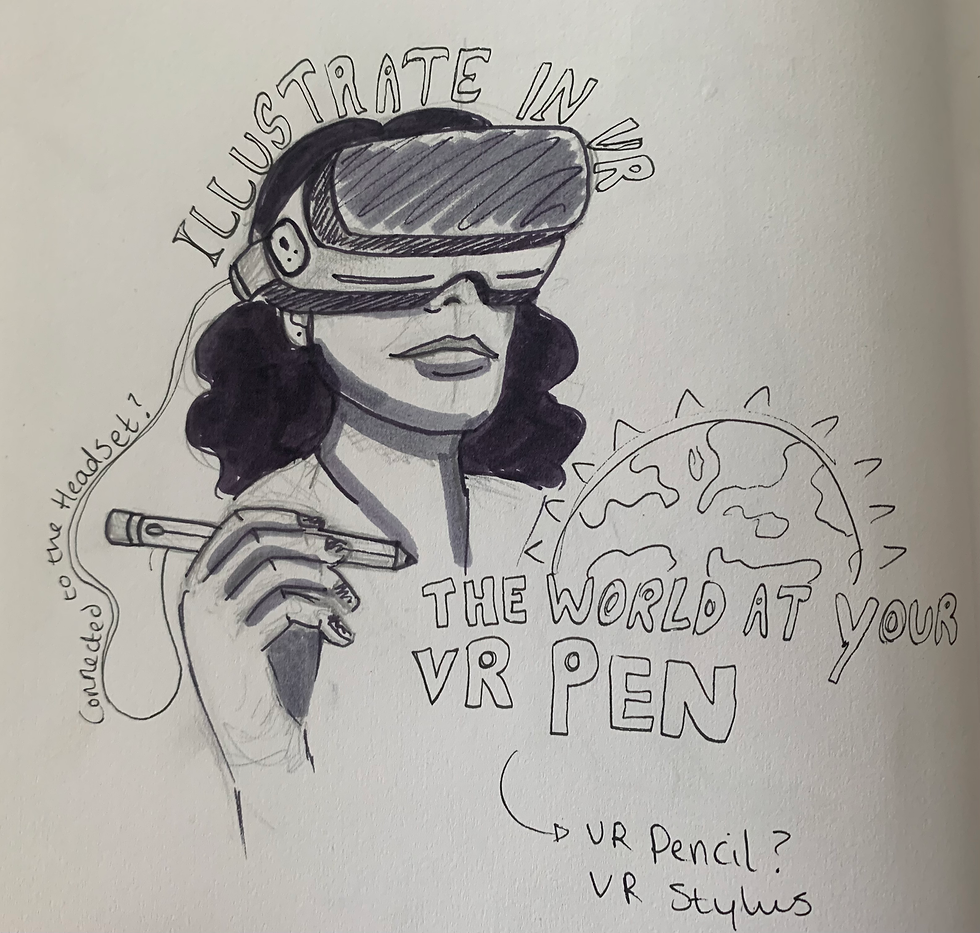


Comments